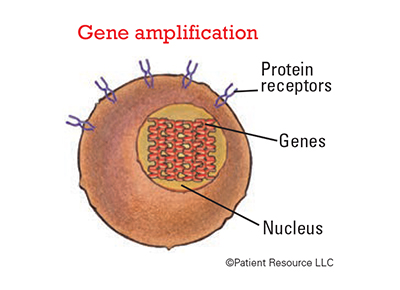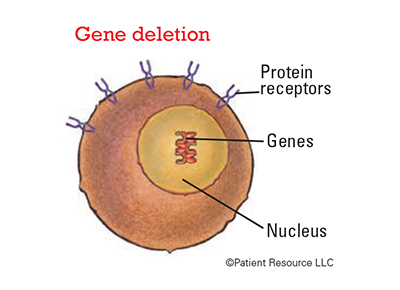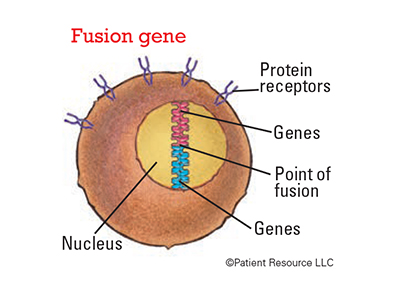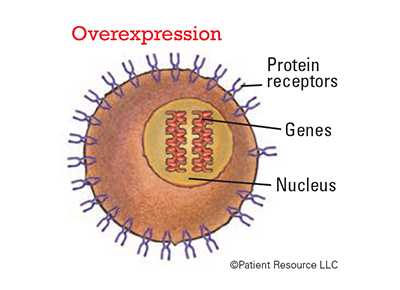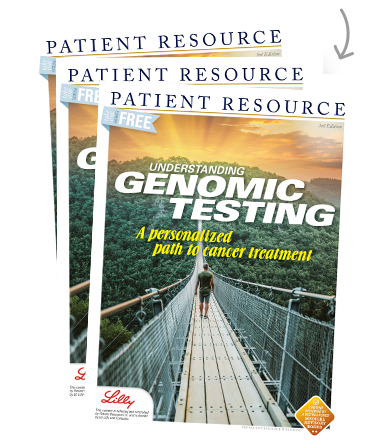Understanding the Genomics and Genetics of Cancer
Biology Basics
Doctors now recognize that cancer arises from changes that occur in a person’s genes. These changes are known as mutations, and they can cause cells to grow out of control and become cancer cells. The foundation of genomic testing is built on finding these mutations within a cell’s DNA. Knowing the mutations involved can help your doctor diagnose your type or subtype of cancer, choose a treatment option designed for a specific mutation and monitor your condition for a possible recurrence.
Cell Biology 101
Understanding genomic testing begins with learning about cells, their components and how the genes within the cells mutate and become cancer cells.
A cell is the smallest structure of the body capable of performing all of the processes that define life (see Figure 1). Almost every cell in the human body contains a complete copy of the genome (genes), which is a complete set of chromosomes containing the DNA code. These are the biological instructions for the various cells in your body that make each person unique. DNA is passed from adults to their children.
A cell has three main parts:
- The cell membrane surrounds the cell and controls the substances that go into and out of the cell.
- The nucleus is a structure inside the cell that contains most of the cell’s DNA.
- The cytoplasm is the fluid inside the cell.
A cell’s nucleus contains 46 chromosomes — 23 from your mother and 23 from your father. Each chromosome is made up of DNA, which consists of two twisting, paired strands (base pairs) that create a double helix. Base pairs are bonded to one another forming a “rung of the DNA ladder.”
Genes are sections of DNA on a chromosome that contain the instructions for making a specific protein that the body needs to function properly. Proteins are the basis of body structures, such as skin and hair, and of other substances such as enzymes, cytokines and antibodies. Each gene must have the correct instructions to make its protein.
Defining Mutations
Cancers are driven by a mixture of specific mutations. Mutations can either be acquired during a person’s lifetime from environmental factors, or they are hereditary (inherited from a parent). A mutation is sometimes called a gene or genomic variant.
Testing for acquired and inherited mutations through genomic and genetic testing helps your doctor find the mutations in your genes that are causing your specific cancer.
How Mutations Cause Cancer
It is common for a cell to have mutations, but it requires multiple mutations before a tumor is formed. A single mutation likely will not cause cancer.
Mutations or genomic variants that may lead to cancer can occur in DNA, genes or chromosomes. Some common gene mutations include the following (see Figure 2):
- Gene amplification — An increase in the number of copies of a gene, which is common in cancer cells. Some amplified genes may cause cancer cells to grow or become resistant to anti-cancer drugs.
- Gene deletion — The loss of all or part of a gene.
- Fusion gene — A gene made by joining parts of two different genes. Fusion genes, and the fusion proteins that come from them, may be made when part of the DNA from one chromosome moves to another chromosome. Fusion proteins produced by this change may lead to the development of some types of cancer.
- Overexpression — Too many copies of a protein or other substance.
- Rearrangement — Portions of the chromosome are not in order, which creates a new gene (not shown).
Chromosome mutations or variations that can lead to cancer include the following:
- Deletion — Part of a chromosome is missing or deleted.
- Duplication — Part of the chromosome is duplicated, resulting in extra genetic material.
- Inversion — Part of the chromosome has broken off, turned upside down and reattached.
- Rearrangement — A portion of the chromosome has broken off and reattached, creating a different order of its genes, which may create a new gene.
- Rings — Part of a chromosome has broken off and formed a circle or ring.
- Translocation — Part of a chromosome is transferred to another chromosome.
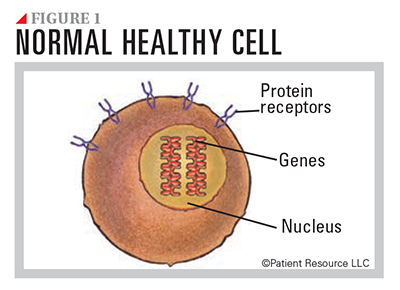
Figure 2 - Gene Mutations
